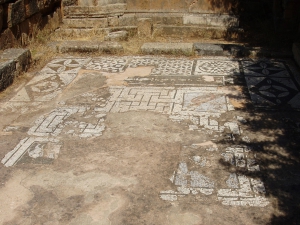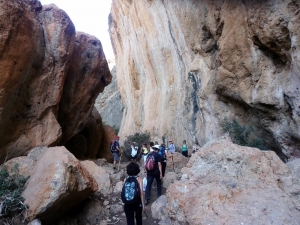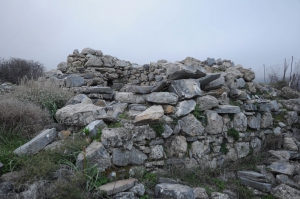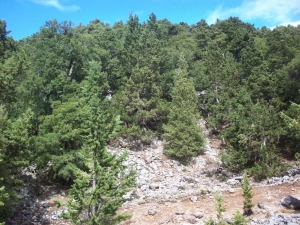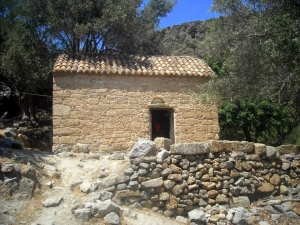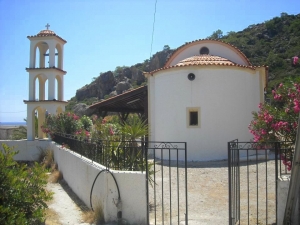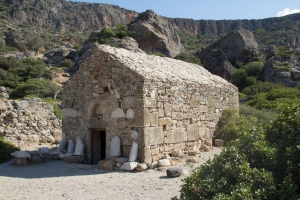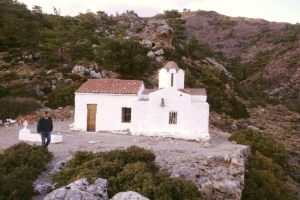Ancient Lissos was the seaport of Elyros and was built in a small valley between Sougia and Paleochora. It flourished from the Hellenistic period up to the 9th century, when it was destroyed by the Saracens. It was famous for the Asclepion, where patients from all over the island arrived to be healed from the thermal baths.
Through the gorge of Lissos passes the trail that connects Sougia to Ancient Lissos. It's a long canyon with imposing towering walls, but the path that leads to ancient Lissos covers only a small part of the route, taking only about 1 hour.
Elyros was the most important town in southwestern Crete during the Doric and Roman Periods. Ruins are conserved 500m far from the village Rodovani atop the panoramic hill Kefala. The town had two harbors: Syia(current Sougia) and Lissos. The exact location of the town was verified by an inscription with the phrase in Greek "Glory to the people of Elyros".
Starting from Sougia, apart from the gorge of Agia Irini, we can choose the alternative route that comes through the beautiful settlement Koustogerako. Then the trail continues and crosses the pine wood by Olisma and conludes at Seliniotikos Gyros, i.e. the southwest passage to Omalos Plateau.
Saint Kirikos or Kirkos is located at the archaeological site of Lissos, on the site of a former Early Christian Basilica and gives its name to the entire valley of Lissos. The vaulted church has Byzantine frescoes, unfortunately damaged.
The present-day settlement of Sougia is built on the site of ancient Syia, which flourished mainly in the late Roman times. Underneath the surviving cemeterial temple of Saint Panteleimon there are the remains of a three-aisled basilica with a 20.80m x 12.40m narthex, which has been excavated by A. Orlandos.
At the site of the ancient seaside town of Lissos, west of Sougia, there are the remains of two 6th-century triple-aisle wooden-roof basilicas with a slightly protruding transverse aisle, which were discovered in 1955 by archaeologist N. Padouvas.
To the north of the Sougia settlement, the church of Saint Irene (Agia Irini) is preserved in the architectural type of the single-nave church with a dome, to which an arched-roof narthex was added in a second stage, which survives as a late reconstruction of its dome.
- 1
- 2












